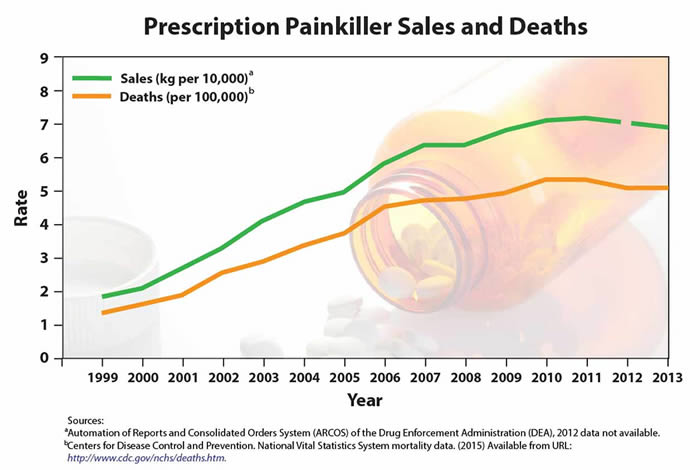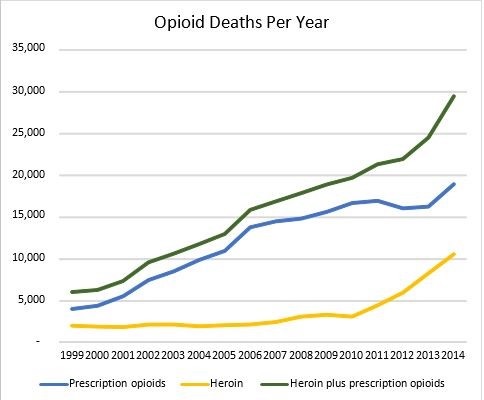The Epidemic Begins
As OxyContin sales rose, so did OxyContin abuse and deaths. The FDA did not anticipate that OxyContin would become so widely abused that it would become synonymous with the opioid epidemic. Despite the FDA's failure to consider the explosion of abuse, OxyContin was the perfect vehicle.
The tablets contained large amounts of medical grade opioid in a single pill, and the pills could be crushed into a powder of pure immediate-release opioid to be swallowed, snorted, or shot up in precisely determined amounts.
Inadequate controls allowed wholesale diversion of OxyContin. And worse still, "pill mills" masquerading as pain clinics allowed "legitimate" prescription of large quantities of opioids for pretend indications. Pill mills overwhelmed the capacity of law enforcement agencies, and wherever they sprung up, death ensued.
Opioid Deaths Linked to Opioid Prescriptions

In 2006 an important discovery was made, which can be summarized as follows: the amount of prescription opioids prescribed predicted the number of deaths from prescription opioids almost perfectly.
Thus, as prescription opioid prescriptions rose, prescription opioid overdose deaths rose in lock step.
The Epidemic Takes Off
What do we mean by calling overdose deaths from prescription opioids and heroin an "epidemic?"
Look at the following chart:

Each year since 1999, the number of deaths from heroin and prescription opioids (green line) has increased.
If you examine the chart more closely, you can see that between 1999 and 2011, prescription opioid deaths (blue line) went up and up, from 4,041 in 1999 to 18,893 in 2014, an increase of over 450%.
A period of hope
In the midst of the shocking rise in prescription opioid overdose deaths from 1999 to 2010, there were signs suggesting that public health warnings were having an effect:
The percent of American adults using prescription opioids nonmedically gradually declined (from 5.4% to 4.9%).
The percent of new nonmedical prescription opioid users gradually declined (from 1.0 to 0.7%).
After a peak in 2010, the number of prescriptions for opioids gradually declined.
From 2011 to 2014, prescription opioid overdose deaths remained stable. In 2012, prescription opioid overdose deaths actually showed a slight decline from 2011.
Under these circumstances, the hope emerged that the worst might be over.
Hopes are dashed
But each year total opioid overdose deaths increased.
From 2010 to 2014, heroin deaths rose 350% (see chart).
And from 2013 to 2014, prescription opioid overdose deaths resumed their increase, with the largest single year increase in deaths since 2006.
In that same year, total opioid overdose deaths increased by 20%.
A second phase of the opioid epidemic had begun.
|